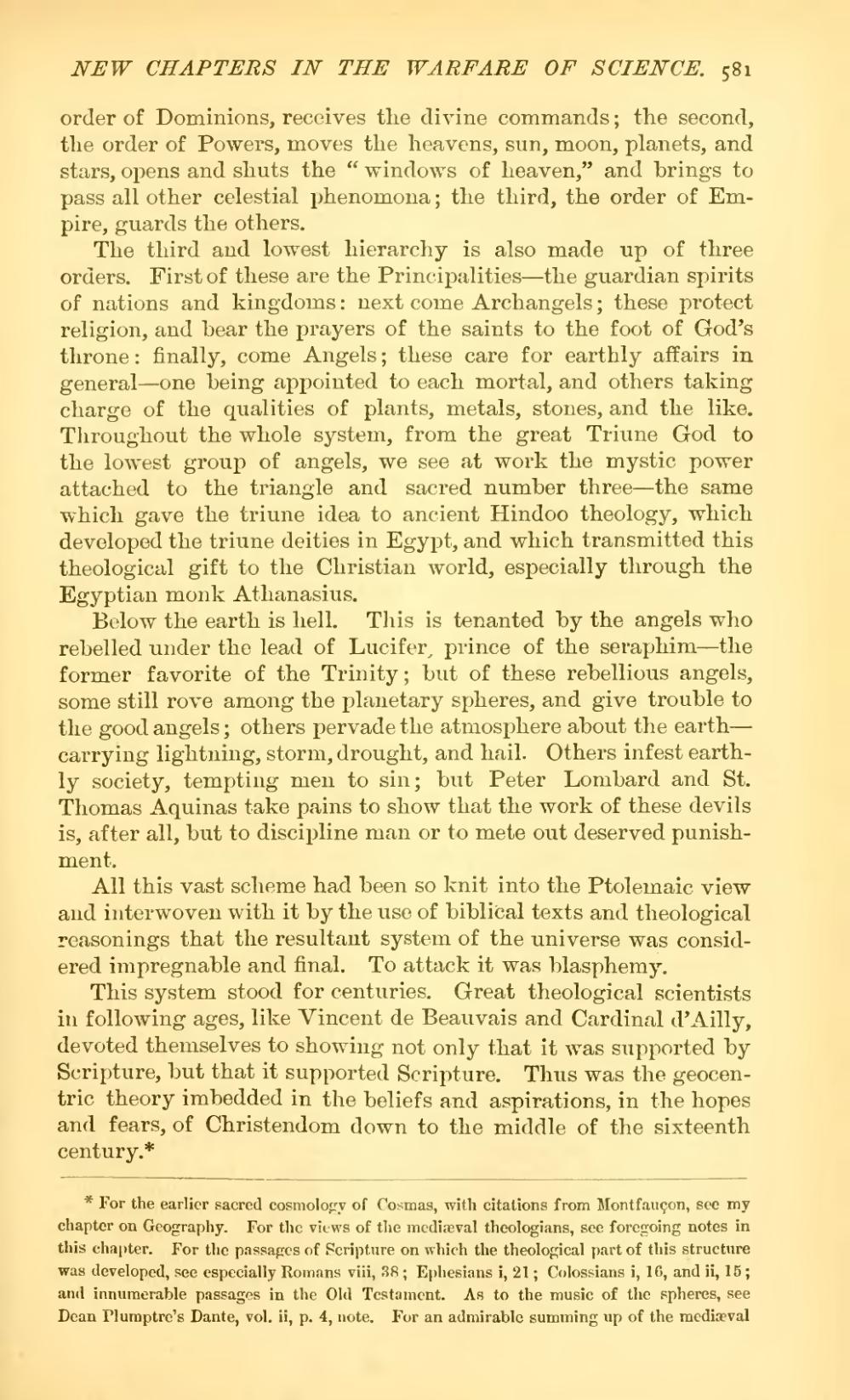order of Dominions, receives the divine commands; the second, the order of Powers, moves the heavens, sun, moon, planets, and stars, opens and shuts the "windows of heaven," and brings to pass all other celestial phenomona; the third, the order of Empire, guards the others.
The third and lowest hierarchy is also made up of three orders. First of these are the Principalities—the guardian spirits of nations and kingdoms: next come Archangels; these protect religion, and bear the prayers of the saints to the foot of God's throne: finally, come Angels; these care for earthly affairs in general—one being appointed to each mortal, and others taking charge of the qualities of plants, metals, stones, and the like. Throughout the whole system, from the great Triune God to the lowest group of angels, we see at work the mystic power attached to the triangle and sacred number three—the same which gave the triune idea to ancient Hindoo theology, which developed the triune deities in Egypt, and which transmitted this theological gift to the Christian world, especially through the Egyptian monk Athanasius.
Below the earth is hell. This is tenanted by the angels who rebelled under the lead of Lucifer, prince of the seraphim—the former favorite of the Trinity; but of these rebellious angels, some still rove among the planetary spheres, and give trouble to the good angels; others pervade the atmosphere about the earth—carrying lightning, storm, drought, and hail. Others infest earthly society, tempting men to sin; but Peter Lombard and St. Thomas Aquinas take pains to show that the work of these devils is, after all, but to discipline man or to mete out deserved punishment.
All this vast scheme had been so knit into the Ptolemaic view and interwoven with it by the use of biblical texts and theological reasonings that the resultant system of the universe was considered impregnable and final. To attack it was blasphemy.
This system stood for centuries. Great theological scientists in following ages, like Vincent de Beauvais and Cardinal d'Ailly, devoted themselves to showing not only that it was supported by Scripture, but that it supported Scripture. Thus was the geocentric theory imbedded in the beliefs and aspirations, in the hopes and fears, of Christendom down to the middle of the sixteenth century.[1]
- ↑ For the earlier sacred cosmology of Cosmas, with citations from Montfauçon, see my chapter on Geography. For the views of the mediæval theologians, see foregoing notes in this chapter. For the passages of Scripture on which the theological part of this structure was developed, see especially Romans viii, 38; Ephesians i, 21; Colossians i, 16, and ii, 15; and innumerable passages in the Old Testament. As to the music of the spheres, see Dean Plumptre's Dante, vol. ii, p. 4, note. For an admirable summing up of the mediæval
